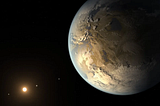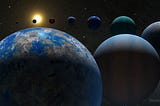Jul 22, 2024
18 stories
1 save
The discovery of dozens of binary rogue planets leaves astronomers questioning how well we understand stellar and planetary formation.
The habitable zone of star helps astronomers determine if a planet may be able to host life.
Astronomers have discovered a new exoplanet with an average density comparable to a marshmallow, less than half the density of Saturn.
The International Astronomical Union is opening up the floor for name suggestions for several exoplanets.
Over 5,000 exoplanets have been discovered and catalogued so far, here are the methods astronomers use to confirm their existence.
March 21st, 2022 - The NASA Exoplanet Archive officially reaches over 5,000 discovered.
3, possibly 4 misclassified exoplanets are actually very small stars, new research finds.
A Neptune-like exoplanet orbiting extremely close to its star puzzles astronomers by containing water vapor.
A 3rd exoplanet has been discovered orbiting Proxima Centauri, the closest star to Earth (other than the Sun).
The TRAPPIST-1 star hosts 7 Earth-sized planets with at least 3 in the habitable zone of the star.
Planets are known to form from matter around newly forming stars, but could they form in the dust and gas from dying stars?
Citizen scientist discovers new exoplanet using NASA's TESS data.
Exoplanets without a star have been discovered, prompting astronomers to wonder how they were formed.
























